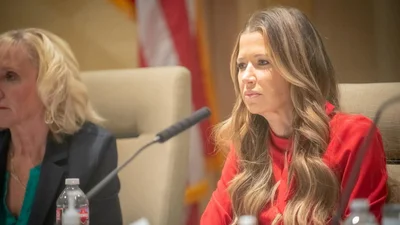Did the number of ballots cast in the NM general election of November 3, 2020 equal the number of voters? We’ll never know because election officials in NM did not properly retain the records necessary to conduct an audit.
The Civil Rights Act of 1960 requires that election records be maintained to determine, in part, how many people have voted in an election and how many ballots have been cast. Section 20701 of the Act provides that election officials must keep all records of federal primary, special or general elections for 22 months after the date of the election. Any willful violation can be punished by a fine of up to $1000 or imprisonment for one year, or both. Section 20702 provides similar penalties for the willful theft, destruction, concealment, mutilation, or alteration of any such record. The purpose of these sections is to make it more difficult to hide election fraud.
In 2021, the Voter Reference Foundation (VRF) began a study to analyze the difference between total ballots cast in various states in the 2020 general election and the total number of voters who cast ballots in that election. The study directed document requests to the Secretaries of State of eighteen states, including NM. For NM, a discrepancy of 3844 was discovered between the number of ballots and votes cast.

Charles Sullivan is a retired attorney who has lived in NM for over 40 years.
Because the information received from the respective Secretaries of State in the VFR study was so inadequate, the America First Policy Institute (AFPI) decided to conduct a more thorough investigation beginning in March 2022. That research recently concluded with the report by the AFPI entitled National Review of Retaining Election Records from the 2020 Election which is available on the internet.
“For subsequent analyses, three main datasets were used: the state dataset we received from the Secretary of State state’s election authority, the county datasets, and the canvasses.”
“Public record requests to county officials occurred over several months, beginning in March 2022. This examination sought to obtain time-stamped voter record data from the top 100 most populated counties of the 14 swing states: Arizona, Colorado, Florida, Georgia, Iowa, Michigan, Minnesota, North Carolina, New Hampshire, New Mexico, Nevada, Pennsylvania, Virginia, and Wisconsin.”
Incredibly, only six of these top 100 county election officers responded with data of voters who voted in the November 3, 2020, general election without disclaimers (meaning some claim that the data was not exactly retained). Nonetheless, discrepancies still existed for the six counties.
The four most populated counties in New Mexico were Bernalillo, Doña Ana, Sandoval, and Santa Fe. Each was contacted for records and here were the results:
“From our analysis of the top counties in New Mexico, zero of four counties complied with the Civil Rights Act of 1960, retaining the voter data from the November 3, 2020, general election. Bernalillo County and Santa Fe County answered our requests with disclaimers that their data only represented current voters. Dona Ana County redirected us to a different form with the state, and Sandoval County advised us to contact the Secretary of State’s office.”
Copies of the correspondence with the four counties are contained on pages 563 – 588 of the report.
The study makes many recommendations, including the proposed use of time-stamped electronic records, on pages 39 – 41.
Charles Sullivan is a retired attorney who has lived in NM for over 40 years.








